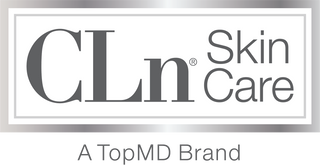Folliculitis is a generic term for an inflammation of the hair follicle, which is the opening from which hair grows. There are several different types of folliculitis including pseudofolliculitis barbae or PFB.
Pseudofolliculitis barbae (also known as “shaving bumps”, “ingrowing hairs”, or “razor bumps”) is irritation of the skin due to hairs that penetrate the skin before leaving the hair follicle or that leave the follicle and curve back into the skin, causing a foreign-body reaction.
It can be painful and easily mistaken for other skin diseases, so a correct diagnosis is critical. Effective treatment requires stopping the habit or practice that causes hair to go in or out of the skin; this requires effort and patience.
Symptoms of pseudofolliculitis barbae
Pseudofolliculitis barbae is also known as barber's itch and razor bumps because it is caused by shaving. It is most commonly found around the beard and neck (hence the term "barbae," which is Latin for "beard") where the hair is most closely shaved.
PFB is marked by raised, red bumps that may itch or ache. The condition may also cause darkening of the skin and small solid, rounded bumps called papules or pus-filled, blister-like lesions called pustules.
However, pseudofolliculitis may also occur in women who shave their groin or other areas of the body where hair is shaved or plucked like underarms and legs.
What causes pseudofolliculitis barbae?
Razor bumps can occur on anyone who shaves, but people with coarse or curly hair are more likely to develop this skin condition. This is the reason why between 45 and 85 percent of African-American males experience PFB. The curly nature of coarse and/or curly hair can make it difficult for these hairs to exit the follicle opening which results in inflamed and irritating bumps.
Shaving, scrubbing, and plucking can even worsen the condition. Plucking hair creates an additional problem because new hair is unable to grow through the inflamed area.
How does the condition affect people who suffer from it?
According to skin expert Mark Jackson, MD, "These bumps can be painful, become infected and can create secondary scarring. Sometimes the condition can be so severe that it creates significant scarring and loss of hair in the areas."
If treated early, most serious complications from razor bumps can be avoided. In some cases, however, if the bumps aren’t treated, there’s a risk of scarring. Keloid scars—raised bumps that may require surgical intervention—are among the possible complications.
How to manage pseudofolliculitis barbae?
PFB often disappears without treatment, but it is possible to treat existing bumps and prevent future ones by taking preventative measures.
-
Don't shave too often.
If you are experiencing razor bumps, these symptoms should dissipate over time. However, try to avoid shaving the affected area while it is still red or has bumps. Shaving less often will also prevent bumps from forming. You may want to try once or twice a week instead. -
Moisturize after shaving.
Dry your skin with a towel and then apply moisturizer after shaving. Choose a gentle moisturizer that will hydrate, soften, and protect the skin from razor bumps. -
Use aloe vera.
Aloe vera is an excellent remedy for razor bumps. It contains antibacterial and soothing properties that help stop itching and inflammation, as well as moisturizing properties that soothe PFB symptoms. You can use the aloe gel for the aloe vera plant by applying it on the affected skin. -
Add tea tree oil to your skin care routine.
Tea tree oil is well known for its antibacterial, anti-inflammatory, and antiseptic properties. It is a natural disinfectant that opens up the pores of the skin and loosens ingrown hair while soothing redness around the follicle and reducing inflammation. -
Exfoliate your skin.
Clean away the build up of dead skin cells in the commonly affected area by gently exfoliating. You can purchase a mild exfoliator or create your own homemade paste. -
Cleanse properly.
Cleansing the skin properly in the affected area helps to decrease bacterial overgrowth, reduces the chance of secondary infections and causes less pain. Cleansers with antibacterial and anti-inflammatory ingredients can help reduce the frequency of flare-ups and decrease the severity of active outbreaks.
For prone to razor bumps, CLn Shampoo was specifically formulated to lather away excess oil and dead skin cells from the scalp and beards of people with itching, folliculitis, and dandruff. The shampoo is suitable for use on all hair types, including close-shaved heads and chemically relaxed hair.
If you have sensitive skin, try the CLn 2-in-1 Gentle Wash and Shampoo instead. It leaves hair and scalps clean and refreshed with its gentle formula, which effectively cleanses pores and hair to promote healthy-looking skin and hair.
